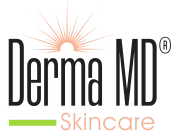Acne. It always seems to pop up when you need it least, a bloom of breakouts in the dead center of your face when you have a big date or meeting or family gathering, or it’s your annoying constant companion. We empathize and feel your pain.
At a high level, acne can be the result of a few things: a compromised skin barrier, excess sebum production, and/or inflammation. All of those may sound like daunting causes, but they needn’t be! We’ve come up with 3 key things to think about when it comes to tackling acne.
1. Proper Cleansing
If you struggle with acne, we can’t stress the double cleansing technique enough — start with a gentle oil-based cleanser to melt away makeup, grime, and oil, then follow that with a water-based cleanser with a low pH level.
If you’re thinking it’s counter intuitive to apply oil to already acne-prone skin, rest assured that it's not, and the reason is simple: oil attracts oil. An oil-based cleanser is better able to go into your pores and draw out excess oil and grime, which means your pores are able to "breathe," clear of the gunk that contributes to acne. Not only that, but an oil-based cleanser gently dissolves away makeup, grime, and impurities, so you’re not tugging at skin and irritating it further.
Following up with a water-based cleanser thoroughly gets rid of any remaining makeup, grime, or excess oil, leaving you with clean, supple skin.
Try our Wasabi Acne Cleanser
2. Exfoliating
One of the contributing causes of acne breakouts is the accumulation of dead skin cells on the surface of skin, blocking pores and trapping oil and bacteria. Exfoliating helps slough off those dead skin cells, so your pores can "breathe."
There are two kinds of exfoliants: physical and chemical. Dermatologists don’t always recommend physical exfoliators for acne-prone skin, which are exfoliators like harsh scrubs, cloths, or other similar abrasive substance that physically clear the surface of skin — they can further irritate skin, and they really only work on the surface.
We recommend that you exfoliate 1-2 times a week if you have acne-prone skin; keeping your skin clear of debris and opening up your pores can help keep breakouts under control!
3. Hydrating, hydrating, hydrating
One of the common misconceptions to dealing with acne-prone skin is that you should be taking products away and minimizing your skincare routine. Acne-prone skin (and oily skin) is just as susceptible to dehydration as any other skin type, and it is just as important to layer hydration and lock it in.
When your skin is dehydrated, it overcompensates by triggering more sebum production, which can result in even oilier skin and, possibly, more breakouts.
Also, importantly, dehydrated skin can trigger an inflammatory response, which, in turn, can trigger more sebum production and a slower cell turnover process.
That chain of triggered responses — more oil and less exfoliation — can lead to clogged pores that turn into breakouts. Keeping skin hydrated can help keep that inflammation domino effect at bay, helping to prevent breakouts.
After using any resurfacing acne product, you should always follow it up with an SPF 30 Moisturizer to protect your skin.
Try out out Acne 3 Step System for a complete Acne Treatment:



